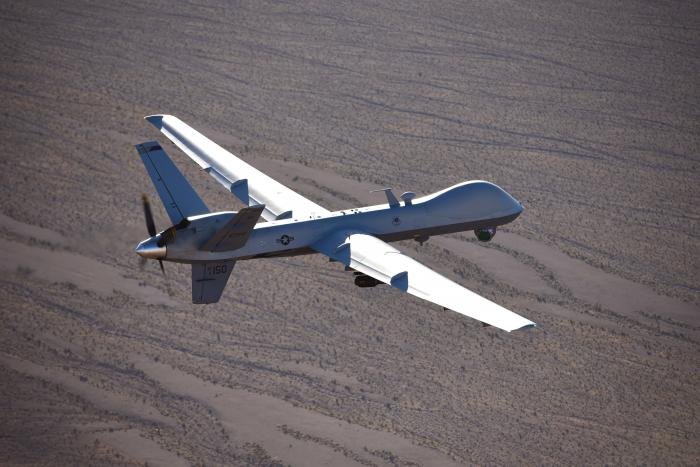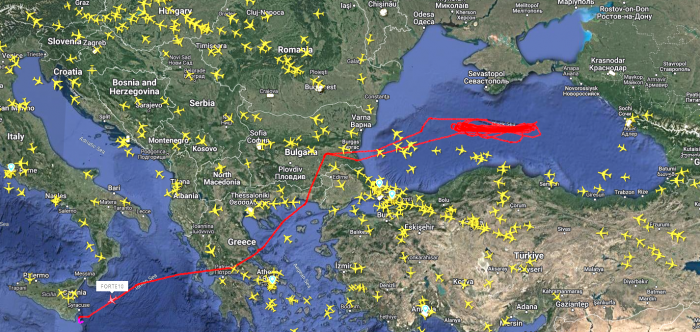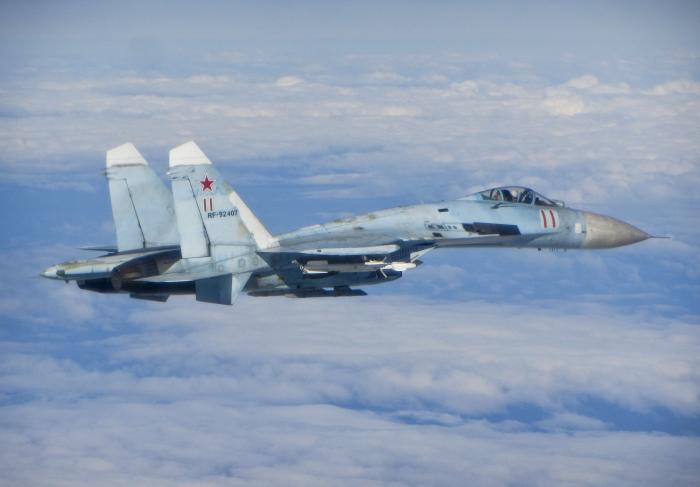A USAF MQ-9A Reaper was destroyed after it was intercepted by two Russian Aerospace Forces (RuAF) Sukhoi Su-27 Flankers during a routine intelligence, surveillance and reconnaissance (ISR) patrol in international airspace over the Black Sea on March 14.
The incident – which is believed to have lasted 45 minutes – saw two Russian Su-27s intercept the MQ-9A while it was operating over the Black Sea without its transponder on before one of the Flankers collided with the Reaper’s propeller at approximately 0703hrs (local time), forcing the USAF to ditch the remotely piloted aircraft in international waters. On several occasions prior to the collision, the two Su-27s dumped fuel on and flew in front of the MQ-9A, which the US Department of Defense has cited as “reckless and unprofessional.” As a result of this incident, the MQ-9 was destroyed and its debris is not recoverable.

This incident marks the first direct encounter between the two global superpowers since the Ukraine War began on February 24, 2022. It is likely that the MQ-9A involved in this incident was being operated from Câmpia Turzii in Romania or from the USAF's MQ-9A detachment in Greece. Prior to the incident, a USAF-operated RQ-4B Global Hawk (serial 10-2045, callsign ‘FORTE10’) was also patrolling international airspace over the Black Sea, however this high-altitude, long-endurance unmanned aerial vehicle departed the area at 0240hrs (local time) before its track was lost approximately 20km south of NAS Sigonella, Sicily, at 0557hrs (local time).
In a statement on the incident, Gen James B Hecker – commander of US Air Forces Europe and Air Forces Africa – said: “Several times before the collision, the Su-27s dumped fuel on, and flew in front of the MQ-9 in a reckless, environmentally unsound and unprofessional manner. This incident demonstrates a lack of competence in addition to being unsafe and unprofessional… This incident follows a pattern of dangerous actions by Russian pilots while interacting with US and allied aircraft over international airspace, including over the Black Sea. These aggressive actions by Russian aircrew are dangerous and could lead to miscalculation and escalation.”

Later on March 14, Brig Gen Pat Ryder – the Pentagon Press Secretary – briefed reporters on the incident. During which, he said that the incident most likely caused damage to the RuAF Su-27 that collided with the MQ-9A, adding that the fighter did land at an unspecified location. He added that imagery and video footage related to this incident is currently being declassified.
The actions of the RuAF Su-27 pilots were condemned by the US government, which summoned the Russian Ambassador to the US, Anatoly Antonov, to the US State Department in the afternoon following the MQ-9A’s downing over the Black Sea. Following the meeting, Antonov told reporters that he had a “constructive conversation” with the Assistant Secretary of State for Europe Karen Donfried. “We don’t want any confrontation between the US and the Russian Federation. We are in favour of pragmatic relations for the interest of the people of the US and Russian Federation.”

However, Antonov was later reported to have told Russia’s state-owned media agency, TASS, that the incident was viewed as a provocation by the US – a sharp U-turn in the rhetoric he was telling reporters after he was called to the US State Department on March 14. In the early hours of March 15, the Russian Embassy in the US published remarks from Antonov, who was blaming the US for the incident. “The unacceptable activity of the US in the close proximity to our borders is a cause for concern. They are collecting intelligence, which is subsequently used by the Kyiv regime to strike at our armed forces and territory,” he said.
The Russian Ministry of Defence has denied that its aircraft has come into contact with the MQ-9A, adding that the remotely piloted aircraft system crashed as a result of “sharp manoeuvring” following its interception by the two Su-27s. Notably, this latest incident took place in the same area that a RuAF-operated Su-27 released a missile in the vicinity of an RAF RC-135W Rivet Joint intelligence-gathering aircraft on September 29, 2022.
Update - March 16, 2023 (1200hrs)
US European Command (EUCOM) has released declassified footage of the two RuAF Su-27s intercepting the USAF-operated MQ-9A Reaper in international airspace over the Black Sea two days earlier.
Early in the video, one of the two Russian Flankers approaches the rear of the MQ-9A and begins to dump fuel on the remotely piloted aircraft system. The video transmission is briefly disrupted as the fighter passes the top of the Reaper, which at that point had not sustained any damage to its propeller.
Later in the footage, another Su-27 (although it may be the same aircraft) approaches the MQ-9A and again proceeds to dump fuel on the drone. However, this second pass is much closer to the Reaper than the first and the camera feed is lost as the two aircraft collide. When the camera feed resumes it is possible to see the damage sustained to the MQ-9A's propeller as a result of the incident. While the video has been edited for the length, the USAF states that the camera feed was lost for approximately 60 seconds following the collision.

